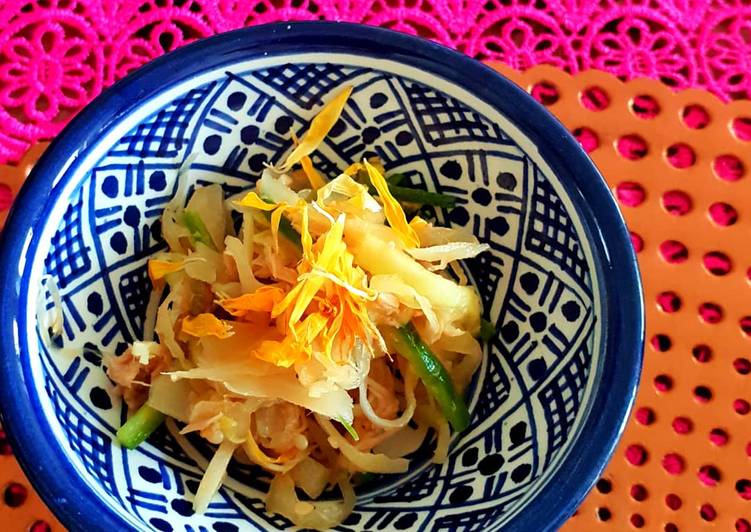Sauerkraut Tsukemono. Delicious and crispy homemade pickled cabbage enjoyed with a traditional Japanese meal, brined in salt, kombu strips, and chili flakes. Tsukemono (漬物, literally translates to "pickled things") are Japanese preserved vegetables that are usually pickled in salt, brine or a bed of rice bran called nuka. Japanese Pickles or Tsukemono (漬物) are a delicious way to preserve vegetables.
 Long a fan of Japanese rice bran pickles, or nukazuke, I've tried several times to make my own at home here in Holland but unfortunately didn't turned out so well. There might be a difference in the kinds of bacteria indigenously inhabiting in the air (or on. There are many kinds that are pickled in many ways, using salt, vinegar, Miso, rice bran, etc. You can have Sauerkraut Tsukemono using 8 ingredients and 2 steps. Here is how you achieve it.
Long a fan of Japanese rice bran pickles, or nukazuke, I've tried several times to make my own at home here in Holland but unfortunately didn't turned out so well. There might be a difference in the kinds of bacteria indigenously inhabiting in the air (or on. There are many kinds that are pickled in many ways, using salt, vinegar, Miso, rice bran, etc. You can have Sauerkraut Tsukemono using 8 ingredients and 2 steps. Here is how you achieve it.
Ingredients of Sauerkraut Tsukemono
- It's 50 g of sauerkraut.
- It's 1 knob of fresh ginger, cut into thin stripes.
- Prepare 50 g of cucumber, cut into thin stripes.
- Prepare 1 Tbsp of canned tuna, drained.
- You need to taste of soy sauce.
- You need 1 of drizzle of sesame oil.
- You need 1 pinch of sesame seeds.
- Prepare of dry calendula petals you find for tea (optional).
Tsukemono get rich flavors often (but not always) from fermentation in a base like rice bran. The salt-pickled cabbage in this recipe does not involve fermentation. There might be a difference in the kinds of bacteria indigenously inhabiting in the air (or on the foods) and that may affect the tas. This is a very basic Japanese "pickle" or salad that you might find in a home-style restaurant or in a bento box.
Sauerkraut Tsukemono step by step
- Combine sauerkraut, ginger, cucumber and tuna in a bowl and season with soy sauce Adjust the amount of soy sauce depending on how much salt in your sauerkraut..
- Drizzle the mixture with sesame oil. Sprinkle sesame seeds and calendula petals to garnish..
This dish is ridiculously simple, but it keeps well and has a nice flavor and some crunch. No dressing makes it lower calorie, also. The different methods used to make tsukemono vary from a simple salting or vinegar brining, to more complicated processes involving cultured molds and fermentation. All kinds of vegetables and some fruits are used to make tsukemono including, but not limited to, Japanese radish (daikon), cucumber, eggplant, carrot, cabbage, water lily root. Delicious and crispy homemade pickled cabbage enjoyed with traditional Japanese meal, brined in salt, kombu strips and chili flake.
Post a Comment
Post a Comment